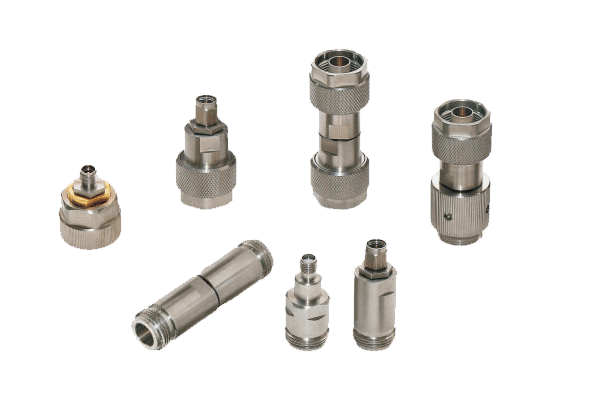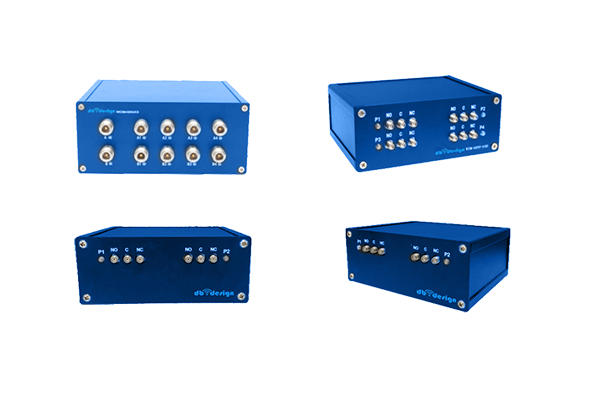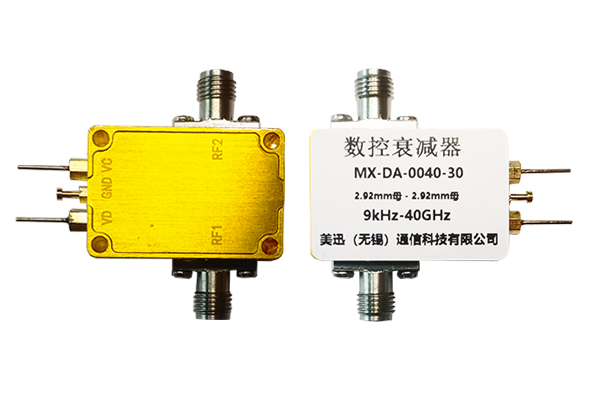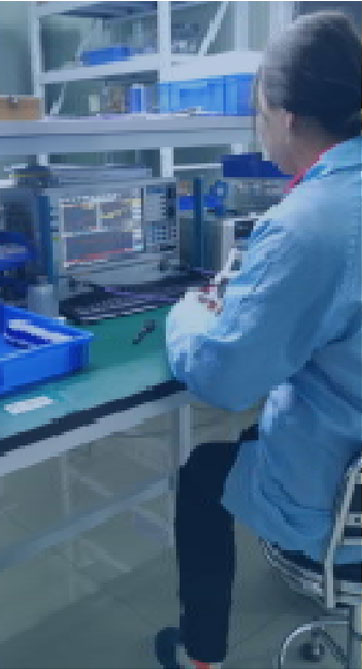
PIN diodes have evolved into key components for microwave and RF applications due to their built-in device properties Their quick conductive to nonconductive switching and compact capacitance with limited insertion loss make them perfect for switches modulators and attenuators. The primary process that governs PIN diode switching is the modulation of current by varying the applied bias. Applying bias shifts the depletion-region extent within the p–n junction and so modifies conductivity. By varying the bias level PIN diodes can be reliably switched to operate at high frequencies with low distortion
In systems that require precise timing and control PIN diodes are commonly integrated into sophisticated circuit topologies They can function inside RF filters to permit or attenuate targeted frequency bands. Their competency in managing strong signals qualifies them for amplifier power splitter and signal source applications. Miniaturization and improved efficiency of PIN diodes have extended their usefulness across wireless systems and radar platforms
Study of Coaxial Switch Performance
Engineering coaxial switches requires meticulous handling of diverse design variables Coaxial switch effectiveness depends on the switch kind frequency of operation and insertion loss metrics. Minimizing insertion loss and enhancing isolation are primary goals for coaxial switch engineering
To analyze performance one must evaluate metrics such as return loss insertion loss and isolation. Evaluation is achieved through simulation studies analytical models and hands on experiments. Accurate analysis is crucial to ensure reliable coaxial switch operation across systems
- Engineers use simulation software analytical calculations and experimental methods to evaluate coaxial switches
- Thermal effects impedance mismatches and production tolerances are major influences on coaxial switch behavior
- Innovative trends and recent advances in switch design emphasize metric improvements while lowering size and consumption
LNA Design for Maximum Fidelity
Achieving high LNA performance efficiency and gain is critical for exceptional signal fidelity in many use cases Successful optimization depends on proper transistor selection correct biasing and appropriate circuit topology. High quality LNA layouts suppress noise sources and deliver amplified signals with limited distortion. Analytical modeling and simulation utilities are key to predicting how different design options influence noise behavior. The goal is to minimize Noise Figure, reflecting the amplifier’s proficiency in maintaining signal relative to added noise
- Prioritizing low-noise transistors is crucial for optimal LNA performance
- Correctly applied bias conditions that are optimal and suitable are vital for low noise
- Circuit topology choices are decisive for the resulting noise performance
Approaches such as matching networks noise suppression and feedback loops help improve LNA behavior
Wireless Path Selection via PIN Switches

PIN diode based routing offers versatile efficient control of RF signal paths These semiconductors can be rapidly switched on or off allowing dynamic path control. Low insertion loss combined with excellent isolation is a primary advantage that reduces signal degradation. Common uses encompass antenna selection duplexers and phased array implementations
The switching behavior is governed by voltage driven modulation of the diode’s resistance. In the open or deactivated condition the device offers large resistance that prevents signal passage. Applying a forward control voltage lowers the diode’s resistance enabling signal transmission
- Furthermore PIN diode switches boast speedy switching low power consumption and small size
Various PIN diode network configurations and architectural designs can achieve advanced signal routing functions. Linking multiple PIN switches produces dynamic matrices that allow adaptable signal path configurations
Coaxial Microwave Switch Performance Evaluation

Detailed assessment and testing validate coaxial microwave switches for optimal function across electronic systems. Multiple determinants including insertion reflection transmission loss isolation switching speed and operating bandwidth shape performance. Complete assessment involves quantifying parameters over diverse operational and environmental test conditions
- Moreover additionally furthermore the evaluation ought to include reliability robustness durability and environmental tolerance considerations
- Ultimately the results of a well conducted evaluation provide critical valuable and essential data to guide selection design and optimization of switches for specific applications
Extensive Review on Minimizing Noise in LNA Designs
Low noise amplifier circuits are essential components in many wireless radio frequency and RF communication systems because they amplify weak signals while limiting added noise. This review gives a broad examination analysis and overview of methods to lower noise in LNAs. We investigate explore and discuss chief noise sources including thermal shot and flicker noise. We additionally assess noise matching feedback architectures and optimal bias strategies to curtail noise. It showcases recent advancements such as emerging semiconductor materials and creative circuit concepts that reduce noise figures. Providing comprehensive insight into noise management principles and approaches the article benefits researchers and engineers in RF system development
Applications of Pin Diodes in High Speed Switching Systems

PIN diodes have exceptional unique remarkable properties that suit high speed switching applications Their small capacitance and low resistance facilitate high speed switching suitable for accurate timing control. Also PIN diodes respond proportionally to voltage which allows controlled amplitude modulation and switching actions. Their versatility adaptability and flexibility position them as suitable applicable and appropriate for a wide array of high speed use cases Examples of deployment include optical communication systems microwave circuits and signal processing equipment and devices
Coaxial Switch IC Integration and Circuit Switching
IC coaxial switch technology represents a major step forward in signal routing processing and handling for electronic systems circuits and devices. Specialized ICs manage control and direct signal transmission through coaxial cables ensuring high frequency performance and minimal propagation latency. Miniaturization through IC integration results in compact efficient reliable and robust designs fit for dense interfacing integration and connectivity scenarios
- By rigorously meticulously and carefully implementing these techniques practitioners can achieve LNAs with remarkable noise performance for sensitive reliable electronics With careful meticulous and rigorous execution of these strategies designers can obtain LNAs exhibiting excellent noise performance for sensitive reliable systems By meticulously carefully and rigorously applying these methods developers can produce LNAs with superior noise performance enabling sensitive reliable electronics By carefully meticulously pin diode switch and rigorously applying these approaches designers can realize LNAs with outstanding noise performance enabling sensitive reliable electronic systems
- Applications cover telecommunications data networking and wireless communication systems
- Integration of coaxial switch ICs serves aerospace defense and industrial automation industries
- Application examples include consumer electronics audio video products and test measurement systems
Considerations for LNA Design at Millimeter Wave Frequencies

LNA engineering for mmWave bands involves dealing with increased attenuation and heightened noise impacts. Component parasitics strongly influence mmWave performance mandating careful PCB layout and component choice. Ensuring low input mismatch and strong power gain is critical essential and important for LNA operation at mmWave. Choosing appropriate active devices like HEMTs GaAs MESFETs or InP HBTs is key to achieving low noise at mmWave bands. Further the design implementation and optimization of matching networks remains vital to achieve efficient power transfer and proper impedance matching. Paying attention to package parasitics is necessary since they can degrade LNA performance at mmWave. Selecting low-loss transmission paths and optimal ground plane layouts is essential necessary and important for reducing reflection and preserving bandwidth
PIN Diode RF Switching Characterization and Modeling
PIN diodes exist as key components elements and parts in several RF switching applications. Thorough precise and accurate characterization of these devices is essential for designing developing and optimizing reliable high performance circuits. Part of the process is analyzing evaluating and examining their electrical voltage current characteristics like resistance impedance and conductance. Also characterized are frequency response bandwidth tuning capabilities and switching speed latency response time
Furthermore developing precise models simulations and representations for PIN diodes is crucial essential and vital to forecast performance in complex RF systems. Several diverse modeling approaches exist such as lumped element distributed element and SPICE models. The choice of model simulation or representation hinges on the specific application requirements and the desired required expected accuracy
High End Approaches for Low Noise Amplifier Design
Developing LNAs involves diligent consideration of circuit topology and components to obtain optimal noise performance. Recent advances in semiconductor tech have unlocked innovative groundbreaking sophisticated LNA design techniques that diminish noise greatly.
Notable techniques include employing utilizing and implementing wideband matching networks incorporating low-noise transistors with high intrinsic gain and optimizing biasing schemes strategies and approaches. Moreover advanced packaging techniques and effective thermal management significantly contribute to reducing external noise sources. With careful meticulous and rigorous execution of these strategies designers can obtain LNAs exhibiting excellent noise performance for sensitive reliable systems
